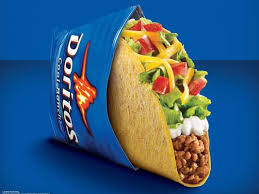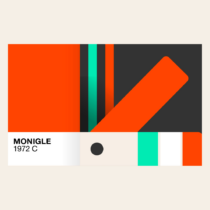Brand Collaborations, Part One

How brands go into business together to the benefit of consumers―and each other
Recently FitBit, one of the few companies who have successfully moved into the wearable fitness market, sent out an email to all of their customers, announcing a new collaboration with designer Tory Burch. According to their announcement, the purpose is to bring fashion into fitness tech. This collaboration at first seems to make little sense: spend a $100 on a tracker, then accessorize it with a shiny brass bracelet that costs twice as much. But what this is really about is bringing FitBit to a new breed of fashionistas, who will wear the technology and most likely revel in telling their curious friends and family (not to mention curious onlookers). This plan represents a marketer’s dream scenario―as legions of loyal ambassadors spread the brand story generating awareness and buzz through word-of-mouth (which last time we checked was still free).![]()
And, what does Tory Burch gain from this partnership (aside from millions in licensing revenue)? It can now be seen as part of this technology movement, while still building its attainable, luxury, lifestyle brand. But, the collaboration is not without risk (see Part Two of this series for more on this topic). Both brands are banking on finding a niche within each other’s market segments. Will fashion savvy consumers embrace FitBit as stylish? And, will fitness folks want the looks that Tory Burch brings to this collaboration? Time will tell.
But, where did the idea for the FitBit-Tory Burch fusion come from? The brand collaboration movement is acutally relatively recent. The past ten years has seen an explosion of brands worked together to develop new products, limited time offerings, and specialty packaging to excite customers and propose something that wouldn’t be possible or credible from one company alone. These partnerships are most commonplace in food, fashion, and service related industries.
A great food example is the Doritos Locos tacos craze at Taco Bell, in which the company’s classic taco is served in a shell made from the  Doritos recipe. When first launched, it was so popular that the company expanded its menu to multiple flavors (Cool Ranch!) and excitement around the product increased sales 13% (Q2 of 2012). Much of the interest was attributed to product testing and “teasing,” as both companies prepared to unveil the new menu item. And while popular at first, now 2 years later, sales at Taco Bell are no longer being lifted.
Doritos recipe. When first launched, it was so popular that the company expanded its menu to multiple flavors (Cool Ranch!) and excitement around the product increased sales 13% (Q2 of 2012). Much of the interest was attributed to product testing and “teasing,” as both companies prepared to unveil the new menu item. And while popular at first, now 2 years later, sales at Taco Bell are no longer being lifted.
Sometimes a collaboration is a “give and take” partnership in which the two brands complement each other. Think of Missoni for Target. The partnership was so popular that the Target website crashed and most of the stores and online stock sold out in minutes. Like many of the Target collaborations, it was about bringing affordable fashion to the masses.
Alternatively, brand alliances can help each other grow stronger, building on the solid platform each already owns. Patagonia, the rugged outdoor sports clothing and New Belgium, the third largest craft brewery in the United States are reaching their overlapping audience of adventuresome, craft beer drinkers by providing an organic, refreshing brew (California Route)―of course packaged in a more environmentally friendly can. This collaboration brings together their respective customers, developing brand favorability, and even obsession among their most loyal.
Other brand collaboration examples are designed to make life easier or more enjoyable for consumers. The Starbucks and Duracell  partnership provides wireless charging tables in a number of Starbucks locations, increasing awareness of Duracell’s new Powermat while encouraging customers to order an additional drink or two while they wait―or a Venti instead of a Grande while their phone to charges up. Frontier and DIRECTV makes it possible for a parent to enjoy a long flight with kids in tow because the airline provides movie service on all of its planes. Southwest and DISH have followed suit, offering in-air entertainment and discounts for customers who want to continue the service at home. Both discount airlines have found a way to keep fliers happy, while keeping prices low.
partnership provides wireless charging tables in a number of Starbucks locations, increasing awareness of Duracell’s new Powermat while encouraging customers to order an additional drink or two while they wait―or a Venti instead of a Grande while their phone to charges up. Frontier and DIRECTV makes it possible for a parent to enjoy a long flight with kids in tow because the airline provides movie service on all of its planes. Southwest and DISH have followed suit, offering in-air entertainment and discounts for customers who want to continue the service at home. Both discount airlines have found a way to keep fliers happy, while keeping prices low.
Brand collaborations show no sign of stopping because they are built on existing loyal customers and help break through the clutter in the marketplace. But, brand partnerships aren’t always perfect. In Part Two of this series learn about when brand partnerships go wrong.
Elspeth Monigle is a brand strategist and an avid FitBit wearer (but, she’s not sold on Tory Burch!).



